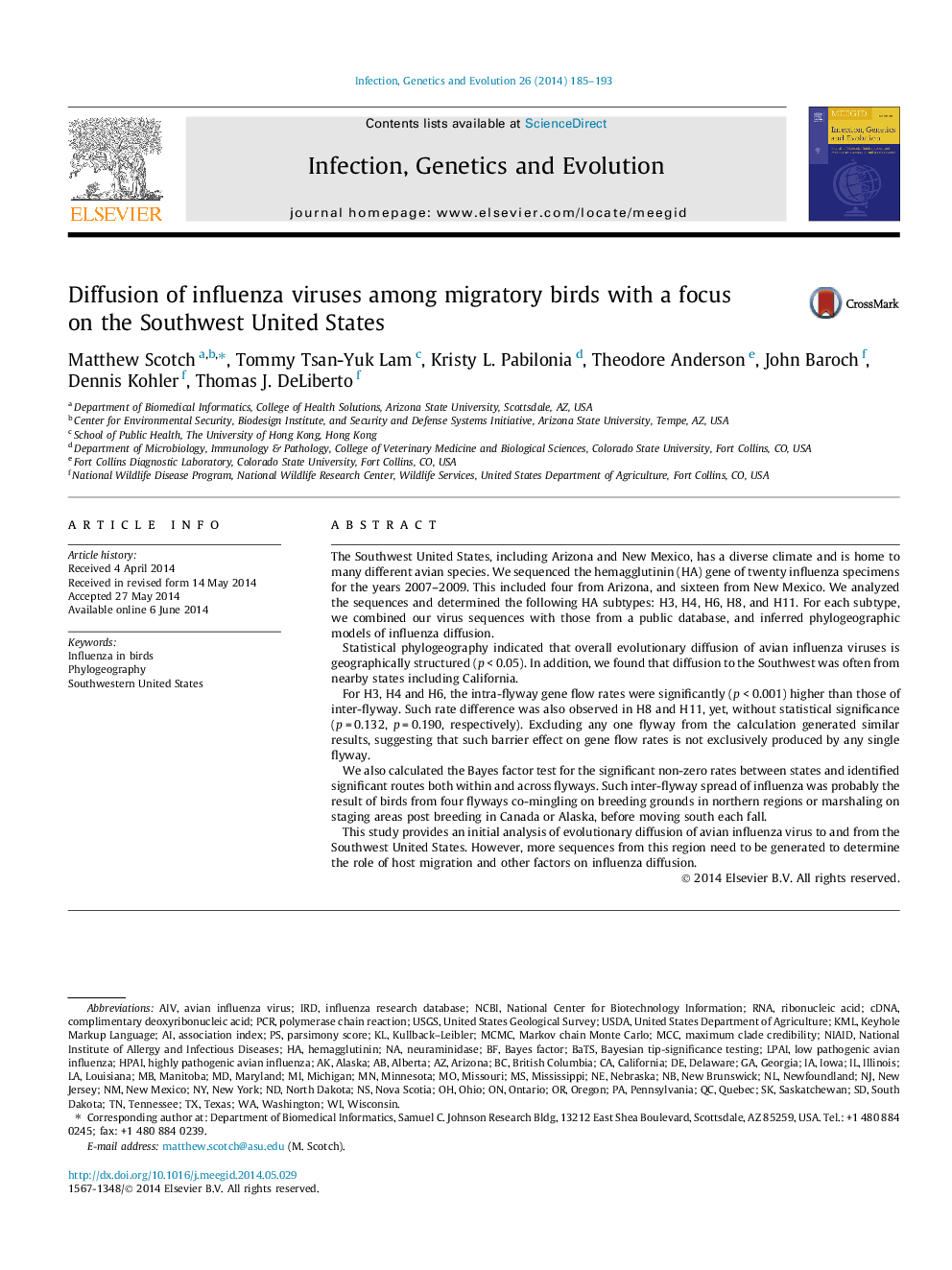| Article ID | Journal | Published Year | Pages | File Type |
|---|---|---|---|---|
| 5909646 | Infection, Genetics and Evolution | 2014 | 9 Pages |
â¢We study the phylogeography of Southwest US avian influenza sequences.â¢We sequence twenty hemagglutinin genes from New Mexico and Arizona.â¢Analysis indicated that the evolutionary diffusion is geographically structured.â¢The intra-flyway gene flow rates were higher than those of inter-flyway rates.â¢Influenza diffusion to the Southwest was often from nearby states including California.
The Southwest United States, including Arizona and New Mexico, has a diverse climate and is home to many different avian species. We sequenced the hemagglutinin (HA) gene of twenty influenza specimens for the years 2007-2009. This included four from Arizona, and sixteen from New Mexico. We analyzed the sequences and determined the following HA subtypes: H3, H4, H6, H8, and H11. For each subtype, we combined our virus sequences with those from a public database, and inferred phylogeographic models of influenza diffusion.Statistical phylogeography indicated that overall evolutionary diffusion of avian influenza viruses is geographically structured (p < 0.05). In addition, we found that diffusion to the Southwest was often from nearby states including California.For H3, H4 and H6, the intra-flyway gene flow rates were significantly (p < 0.001) higher than those of inter-flyway. Such rate difference was also observed in H8 and H11, yet, without statistical significance (p = 0.132, p = 0.190, respectively). Excluding any one flyway from the calculation generated similar results, suggesting that such barrier effect on gene flow rates is not exclusively produced by any single flyway.We also calculated the Bayes factor test for the significant non-zero rates between states and identified significant routes both within and across flyways. Such inter-flyway spread of influenza was probably the result of birds from four flyways co-mingling on breeding grounds in northern regions or marshaling on staging areas post breeding in Canada or Alaska, before moving south each fall.This study provides an initial analysis of evolutionary diffusion of avian influenza virus to and from the Southwest United States. However, more sequences from this region need to be generated to determine the role of host migration and other factors on influenza diffusion.
